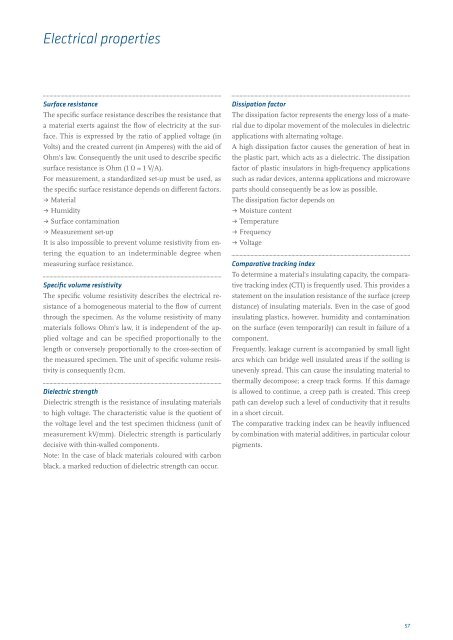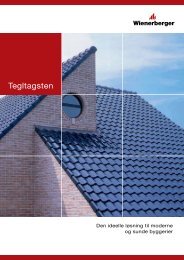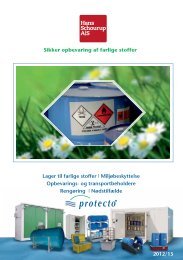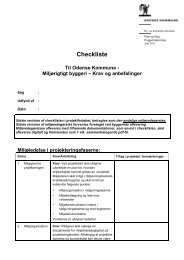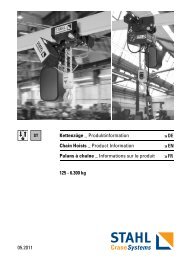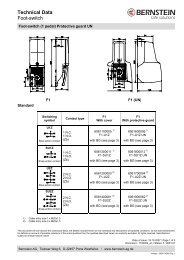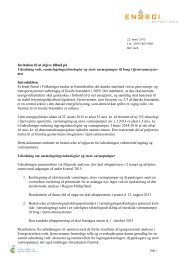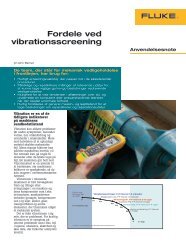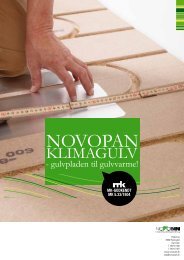Engineering plastics â The Manual - F.wood-supply.dk
Engineering plastics â The Manual - F.wood-supply.dk
Engineering plastics â The Manual - F.wood-supply.dk
You also want an ePaper? Increase the reach of your titles
YUMPU automatically turns print PDFs into web optimized ePapers that Google loves.
Electrical properties<br />
Surface resistance<br />
<strong>The</strong> specific surface resistance describes the resistance that<br />
a material exerts against the flow of electricity at the surface.<br />
This is expressed by the ratio of applied voltage (in<br />
Volts) and the created current (in Amperes) with the aid of<br />
Ohm's law. Consequently the unit used to describe specific<br />
surface resistance is Ohm (1 Ω = 1 V/A).<br />
For measurement, a standardized set-up must be used, as<br />
the specific surface resistance depends on different factors.<br />
ˌˌMaterial<br />
ˌˌHumidity<br />
ˌˌSurface contamination<br />
ˌˌMeasurement set-up<br />
It is also impossible to prevent volume resistivity from entering<br />
the equation to an indeterminable degree when<br />
measuring surface resistance.<br />
Specific volume resistivity<br />
<strong>The</strong> specific volume resistivity describes the electrical resistance<br />
of a homogeneous material to the flow of current<br />
through the specimen. As the volume resistivity of many<br />
materials follows Ohm's law, it is independent of the applied<br />
voltage and can be specified proportionally to the<br />
length or conversely proportionally to the cross-section of<br />
the measured specimen. <strong>The</strong> unit of specific volume resistivity<br />
is consequently Ω cm.<br />
Dielectric strength<br />
Dielectric strength is the resistance of insulating materials<br />
to high voltage. <strong>The</strong> characteristic value is the quotient of<br />
the voltage level and the test specimen thickness (unit of<br />
measurement kV/mm). Dielectric strength is particularly<br />
decisive with thin-walled components.<br />
Note: In the case of black materials coloured with carbon<br />
black, a marked reduction of dielectric strength can occur.<br />
Dissipation factor<br />
<strong>The</strong> dissipation factor represents the energy loss of a material<br />
due to dipolar movement of the molecules in dielectric<br />
applications with alternating voltage.<br />
A high dissipation factor causes the generation of heat in<br />
the plastic part, which acts as a dielectric. <strong>The</strong> dissipation<br />
factor of plastic insulators in high-frequency applications<br />
such as radar devices, antenna applications and microwave<br />
parts should consequently be as low as possible.<br />
<strong>The</strong> dissipation factor depends on<br />
ˌˌMoisture content<br />
ˌˌTemperature<br />
ˌˌFrequency<br />
ˌˌVoltage<br />
Comparative tracking index<br />
To determine a material's insulating capacity, the comparative<br />
tracking index (CTI) is frequently used. This provides a<br />
statement on the insulation resistance of the surface (creep<br />
distance) of insulating materials. Even in the case of good<br />
insulating <strong>plastics</strong>, however, humidity and contamination<br />
on the surface (even temporarily) can result in failure of a<br />
component.<br />
Frequently, leakage current is accompanied by small light<br />
arcs which can bridge well insulated areas if the soiling is<br />
unevenly spread. This can cause the insulating material to<br />
thermally decompose; a creep track forms. If this damage<br />
is allowed to continue, a creep path is created. This creep<br />
path can develop such a level of conductivity that it results<br />
in a short circuit.<br />
<strong>The</strong> comparative tracking index can be heavily influenced<br />
by combination with material additives, in particular colour<br />
pigments.<br />
57


